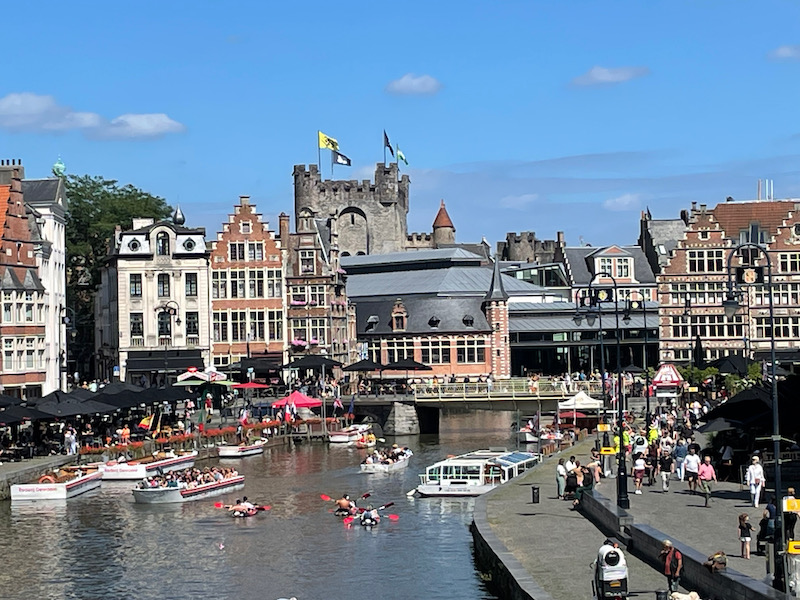Our Blog - Summer 2024 Trip - Ghent, Belgium
Ghent is in the Flemish-speaking region and is the capital and largest city in the East Flanders province. It is also the 3rd largest city in the country (after Brussels and Antwerp). With a port and university, it has always been a fairly important city, with around 260,000 people in the city and over 1/2 a million in the metropolitan area.
Archaeological evidence shows presence here as far as the Stone and Iron Ages, at an important junction of 2 rivers. Most historians believe that the name for Ghent comes from the Celtic word "ganda", which means "confluence", referring to the junction of the Leie and Scheldt rivers. Then came the Romans, then the Franks (4th century) with the first abbeys dating back to 650. The city was big in the textile industry, especially in the 18th and 19th centuries. It was occupied by Germans in both World Wars but escaped severe destruction. Much of the city's medieval architecture remains intact and is remarkably well preserved and restored.
Our first stop was at St Michael’s Church, a Gothic church that was started in 1440 and finally completed 1651. Supposedly the interior decor is Baroque from the 17th century. However, we quickly found out that in Belgium, churches aren't open all the time. Many of them close during lunch and sometimes, are only open in the afternoons (after like 2pm). So you'll see a few outside-of-the-church pictures without any inside-the-church pictures.
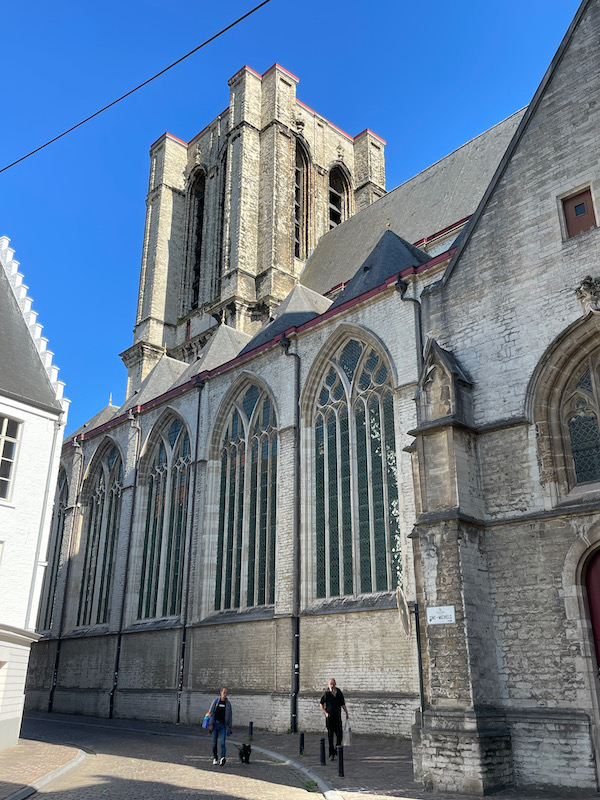
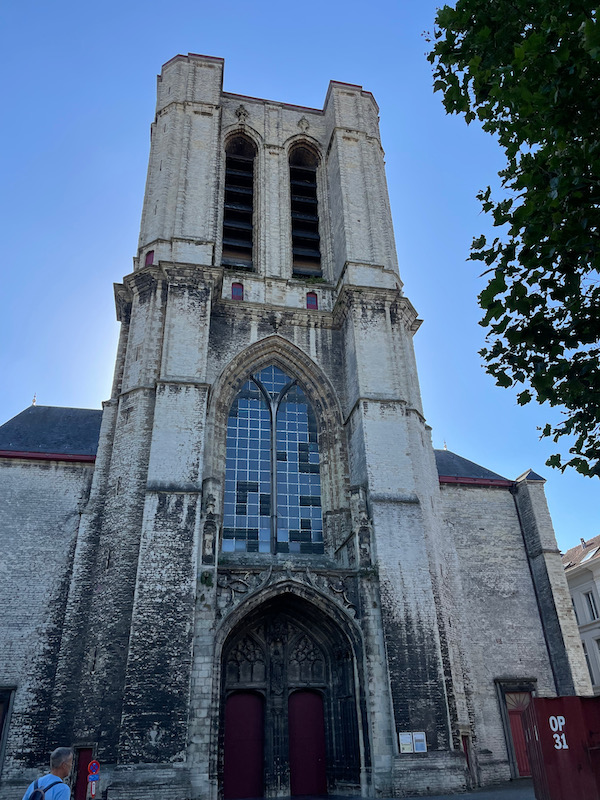
Starting in the 11th century, trade was booming here on the banks of the river. There are 2 main quays here: the Korenlei and the Graslei ... the corn and wheat quays. Together, they formed the medieval port and are lined with historical buildings. There are lots of great buildings here, including one that is now the home to a Marriott hotel. Most have the steep "Flemish-style" stepped rooflines.

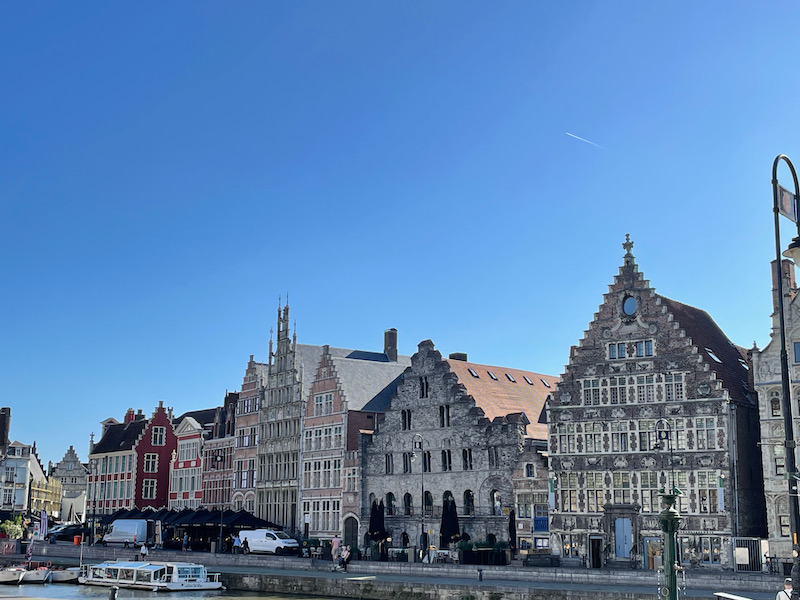
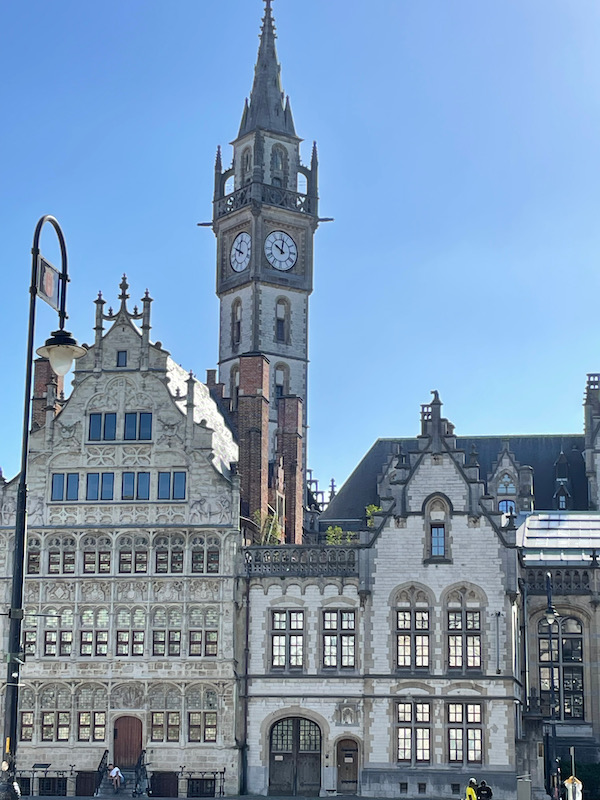
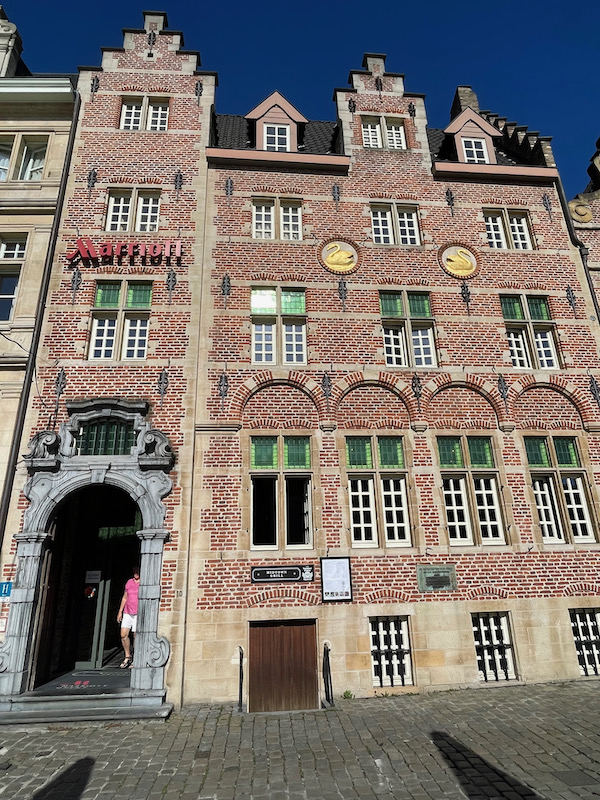
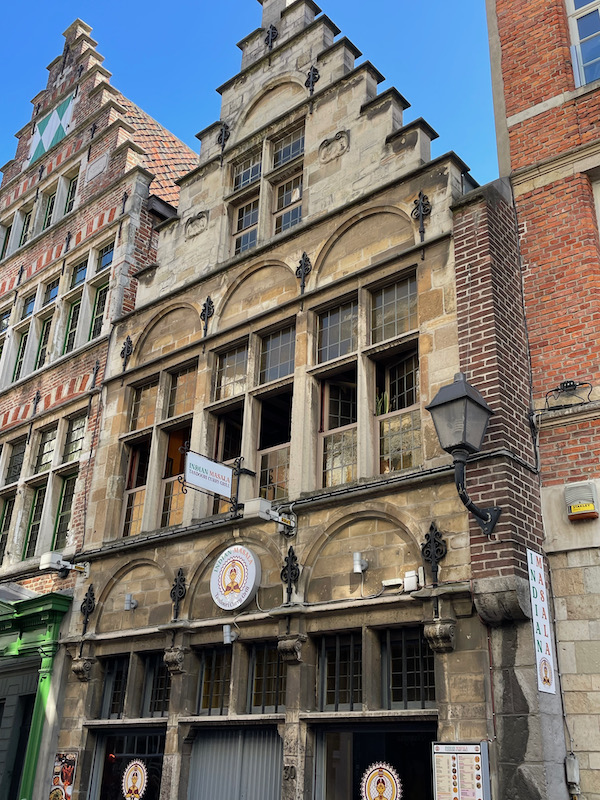
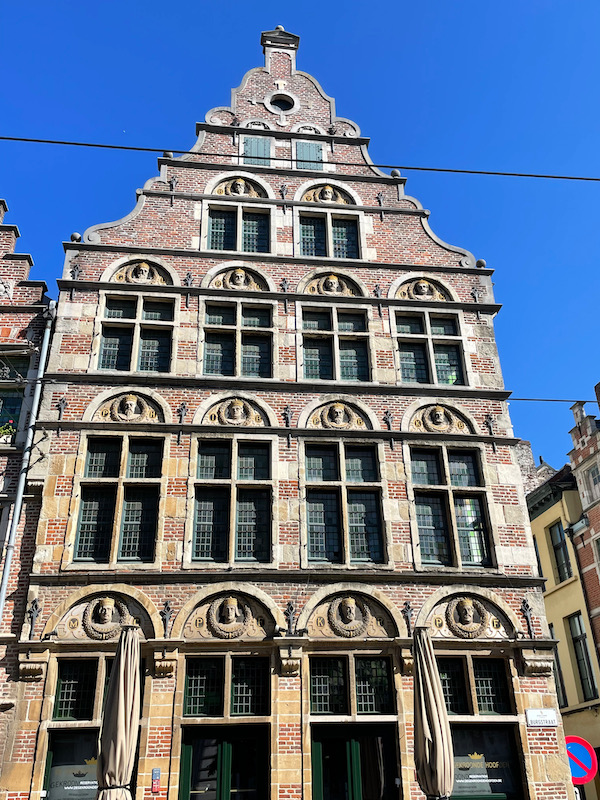
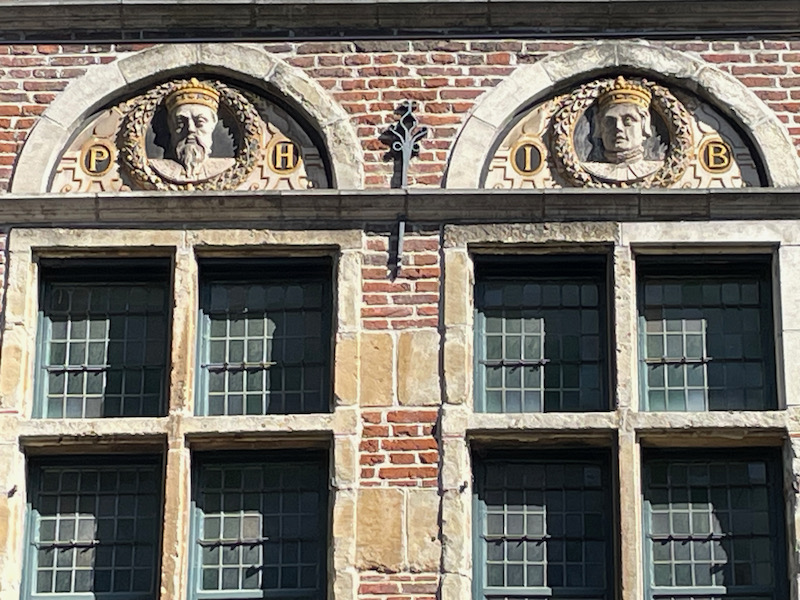
The Castle of The Counts, or Gravensteen Castle, dates from 1180 and resident of the Counts of Flanders until 1353. It was subsequently used as a court, prison, mint, cotton factory, and it is now a museum. The pride of Ghent, that could only be taken by one army: students protesting against rising beer prices. "The Battle of Gravensteen Castle" was Nov 16, 1949 when 138 students occupied the castle over a new tax on beer. Due to public support for the students, no students were prosecuted, but their campaign against the beer tax was unsuccessful. Lucy was quite unhappy that they don't allow dogs, so we were required to boycott the museum. It is HUGE to say the least!
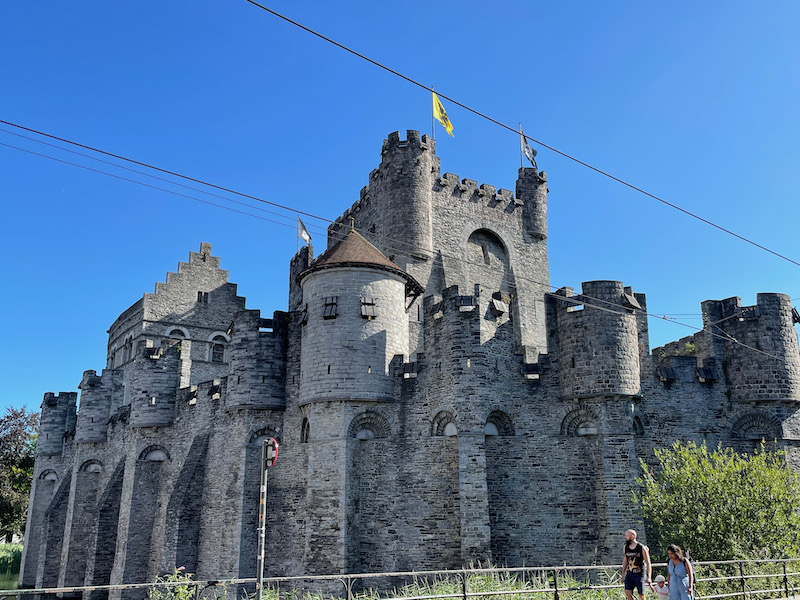
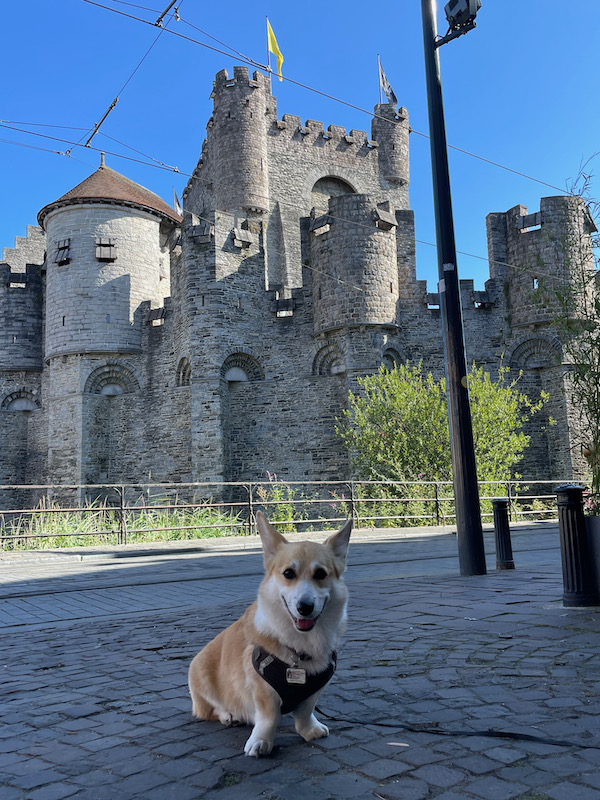
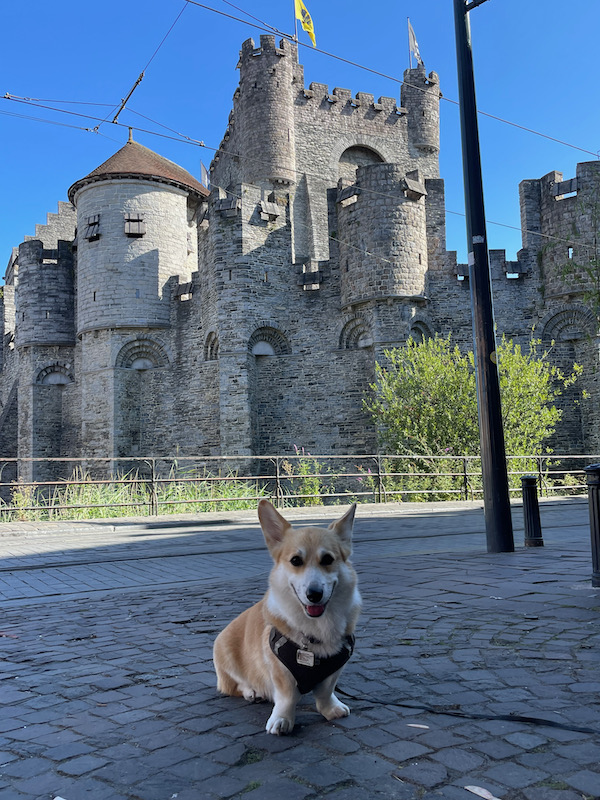
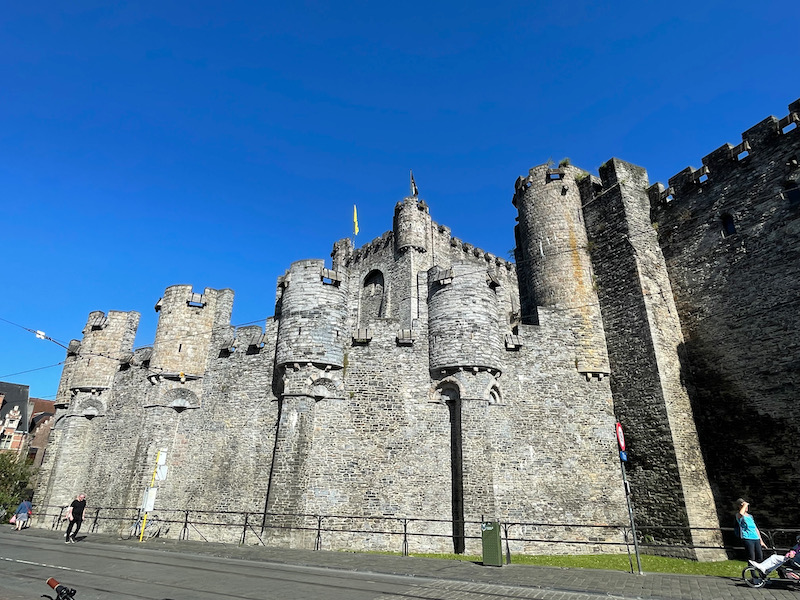
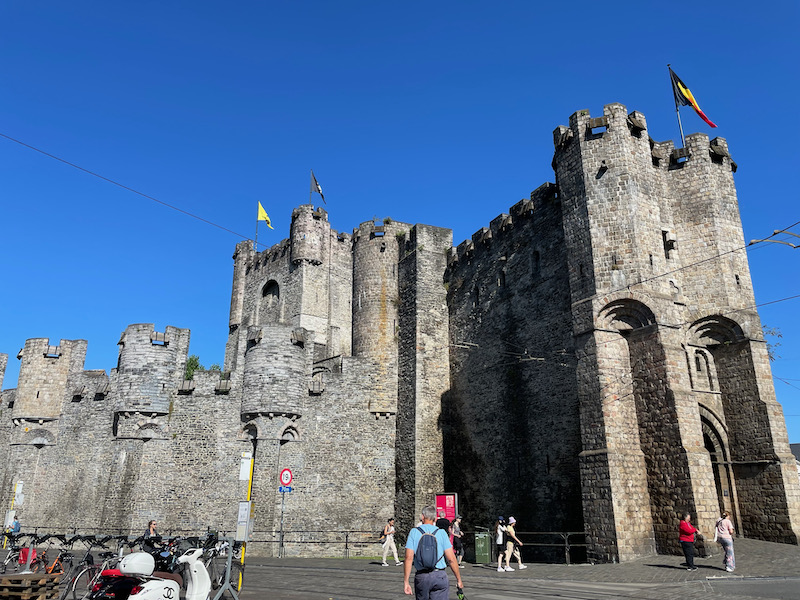
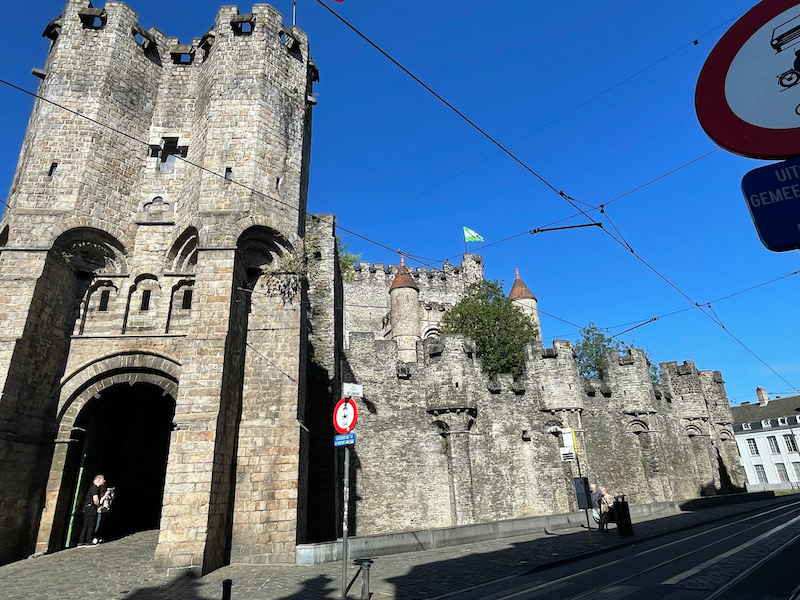
The Rijm family founded a Children's hospital in 1363 at the spot where the Alijn family once founded a hospital as atonement after a fatal dispute between the Alijn and Rijm families. The story goes that Count Louis of Male decided that the Rijm family had to pay the Alijn family a sum of 200 pounds after Simon Rijm murdered Hendrik Alijn. Today, it is a museum about daily life in the 20th century.
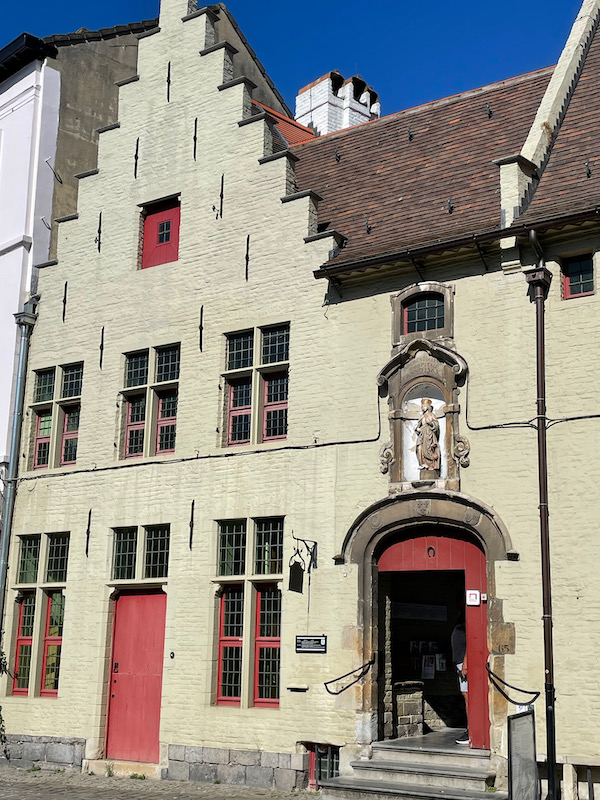

Next door are two old and very beautiful buildings. The building on the left is known as "The Works of Mercy". A Baroque design with Flemish tiles from the mid-17th century, it is decorated with 6 scenes of the works of mercy (burying the dead, saving prisoners, visiting the sick, feeding the hungry, ravaging the thirsty and dressing the naked). The building on the right is known as "The Flying Deer" or "The Flute Player". Also a Baroque design with a gable roof of Flemish tiles, built in 1669. Multiple relief panels depict the allegories of the senses (sight, hearing, smell, taste and feeling). The 6th panel shows a flying deer, which is where the building gets one of the names, while the panel at the top with gives the 2nd name.
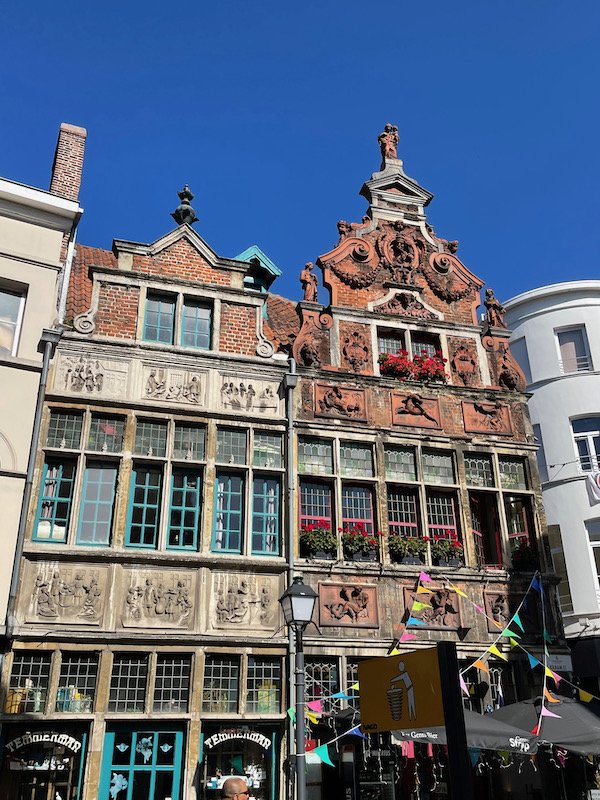
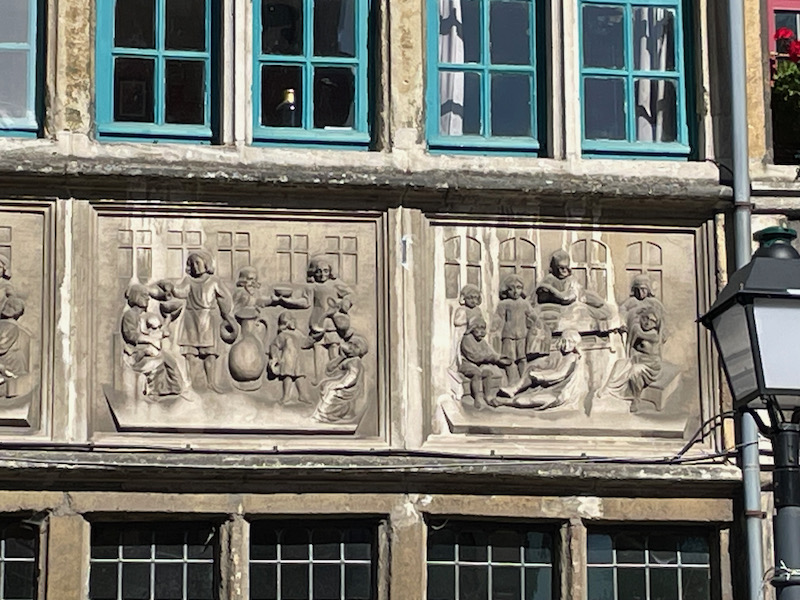
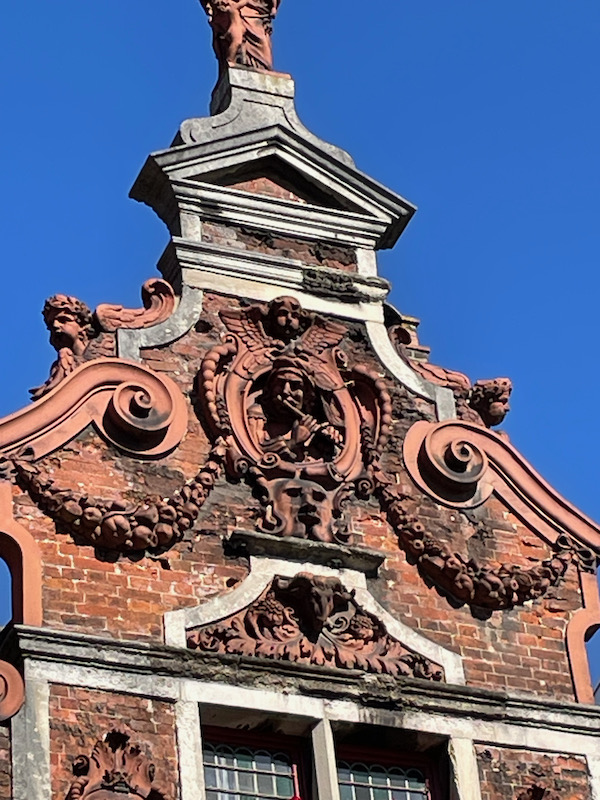
Dulle Griet, or "Mad Meg", is a large cannon from the 15th century. It was deployed in 1452 but then abandoned, and some say that it has never actually been fired.
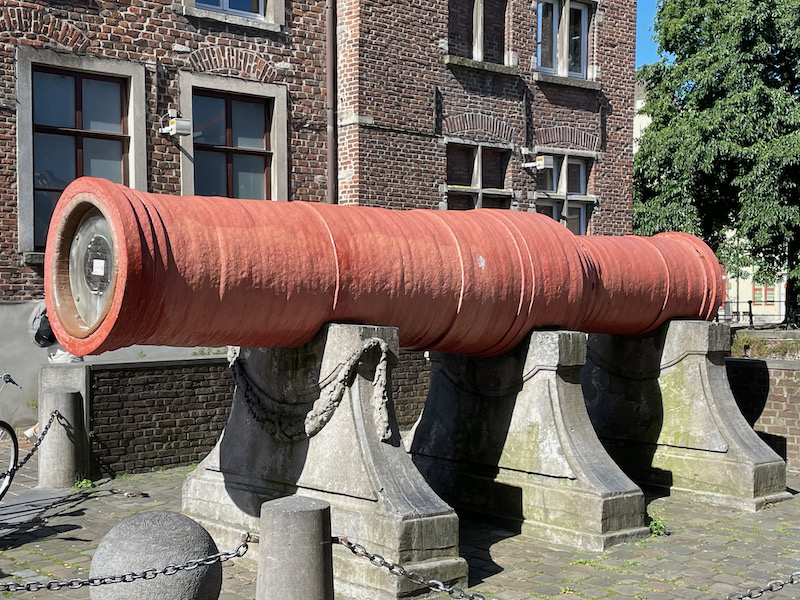
In the 11th century, a wooden church was dedicated to Saint James, likely connected with the arrival of pilgrims on their way to Santiago de Compostella. Around 1120, this was replaced by a Romanesque church made of stone. The two towers on either side of the entrance date from 1120 and the octagonal tower over the transept was added in the 13th century.
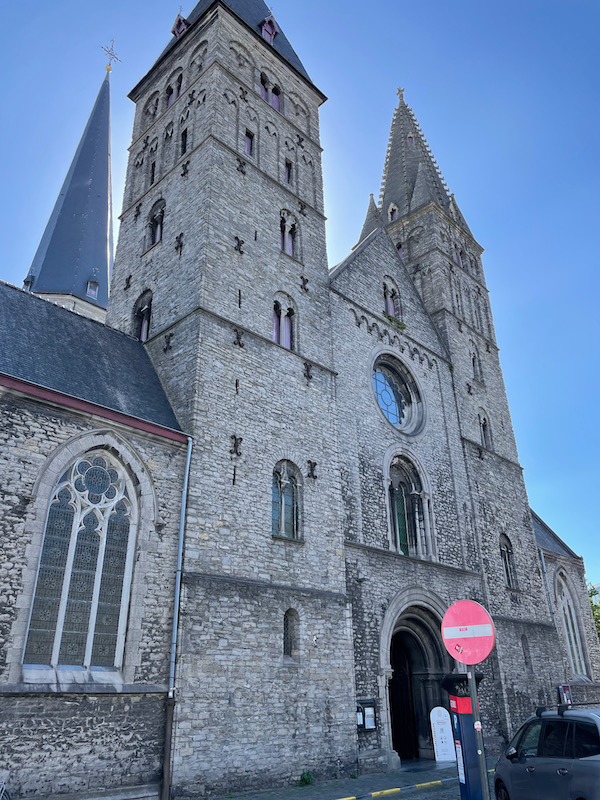
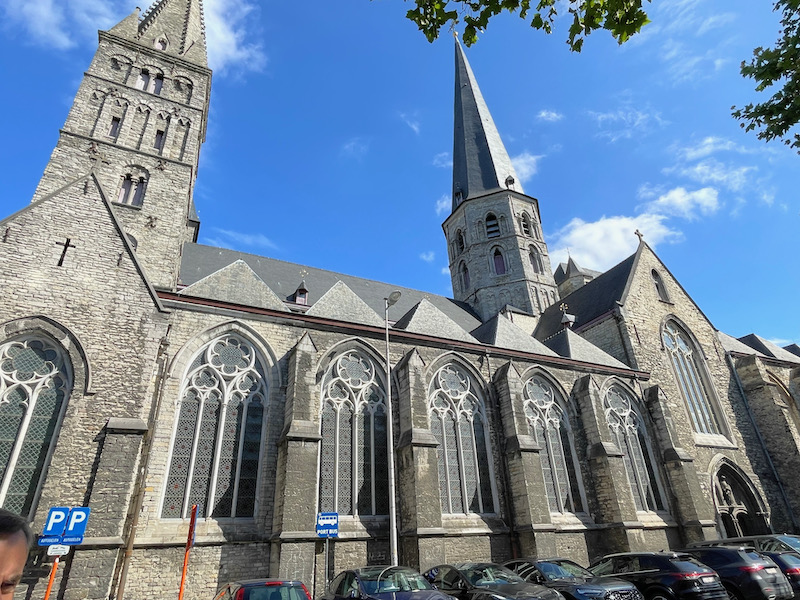
The interior actually looks quite "full", with statues down the nave and side chapels (these were added in the 14th century for the various guilds in town). Quite a few of the altarpieces are in the Baroque style, as is the main altarpiece.
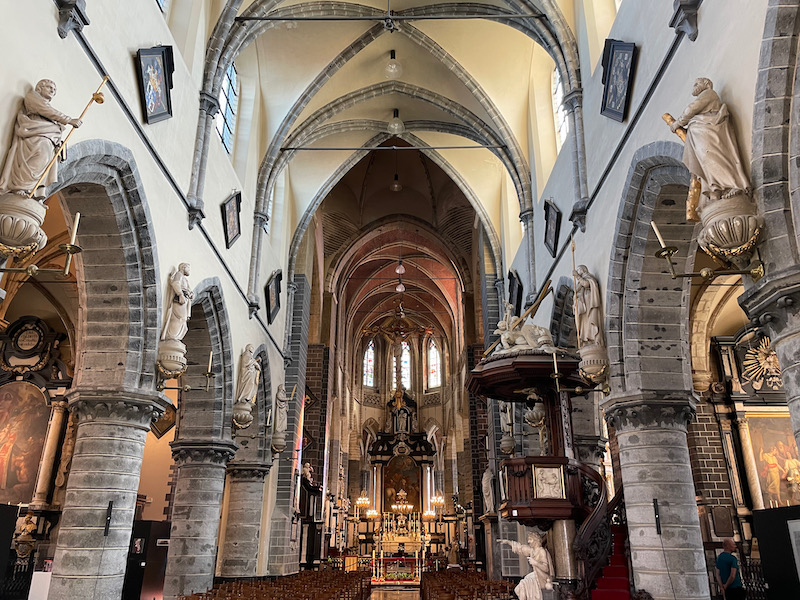
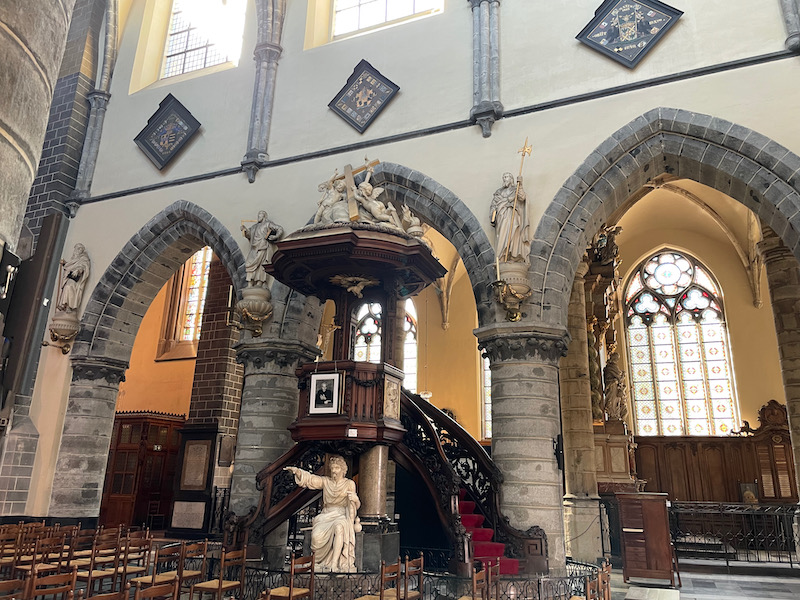
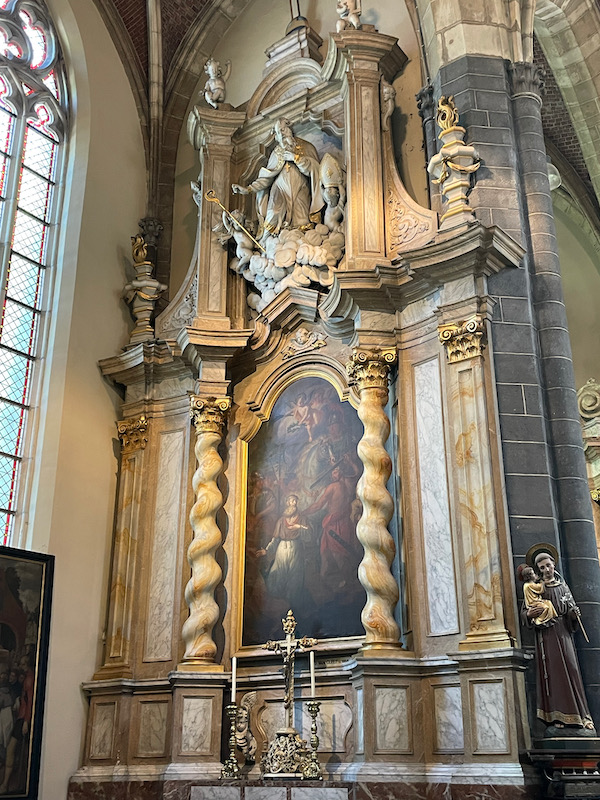
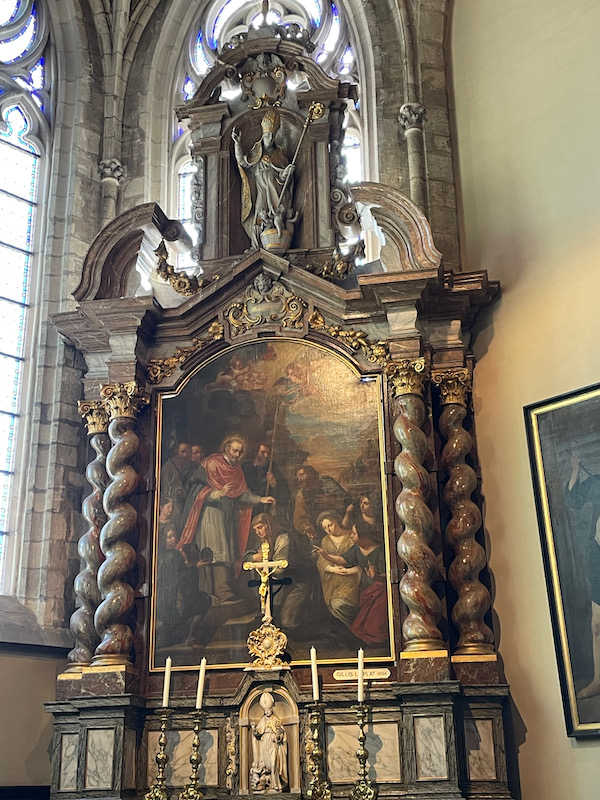

The Baroque "sacrament tower" dates from 1593, after the original Gothic tower was destroyed in 1566.
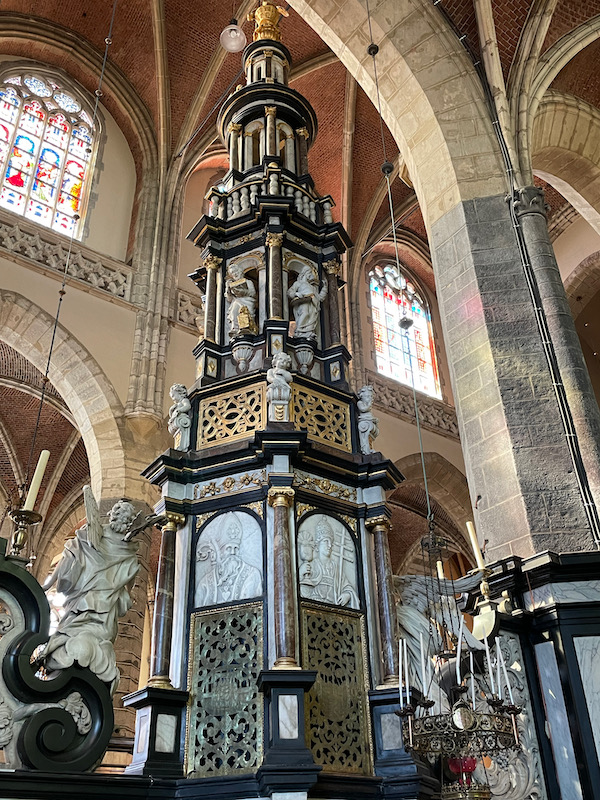
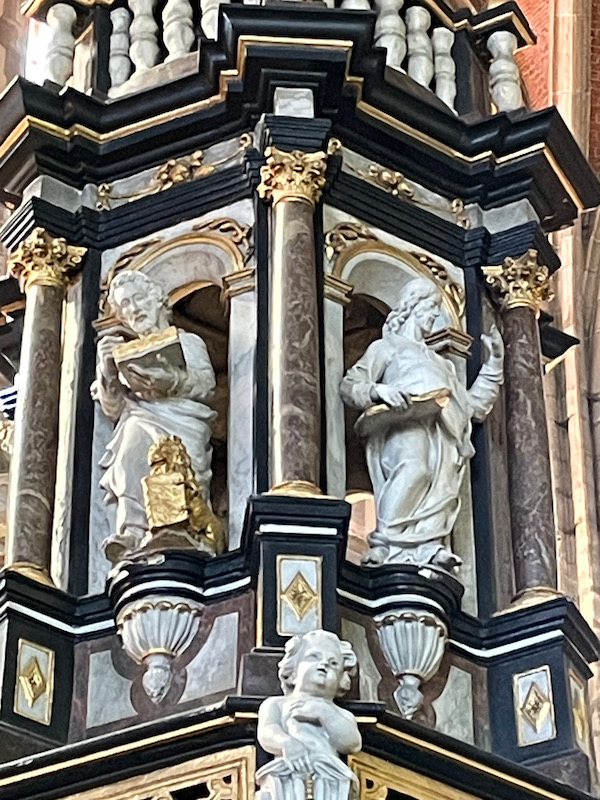
I can't leave without at least a couple of stained-glass window pictures.
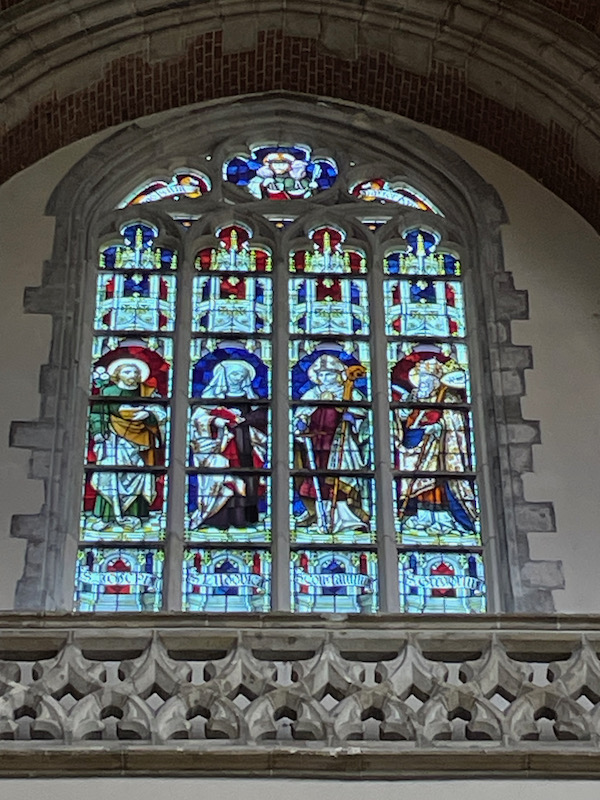
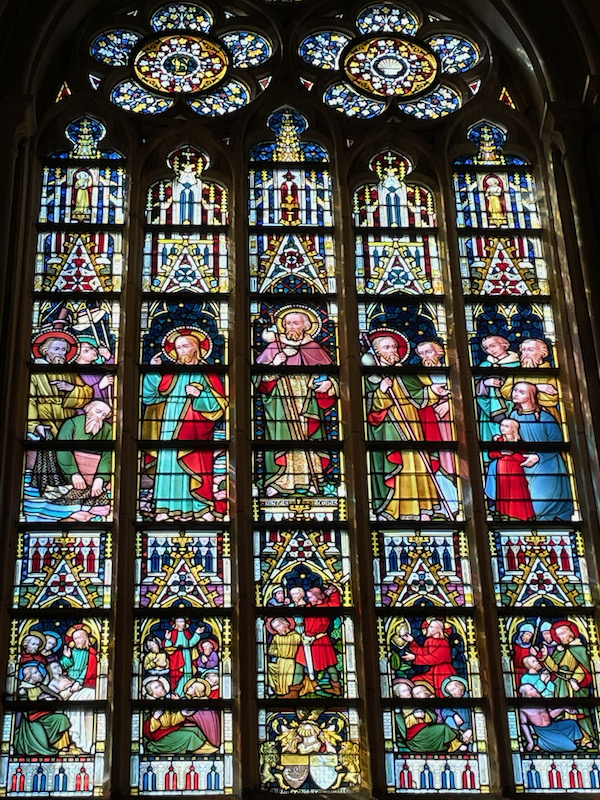
The Ghent City Hall building is unique in that it has 2 different styles: Late Gothic and Renaissance. This part is in late Flamboyant Gothic and was built between 1519 and 1539. The niches in the facade were intended to contain statues of the Counts of Flanders. The Renaissance section of the building is really less interesting :-)

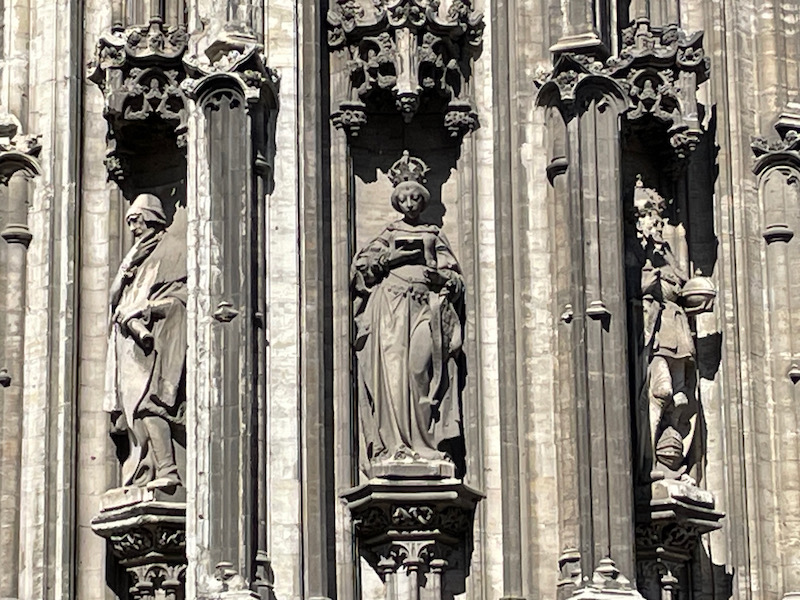
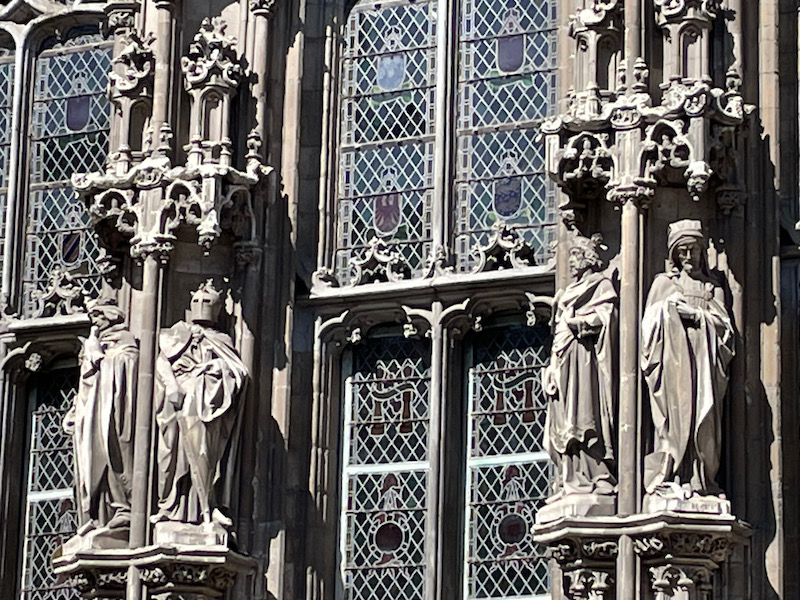
This little square is surrounded by buildings that date from the 14th and 15th centuries. There is a brick corner tower and a round limestone tower.
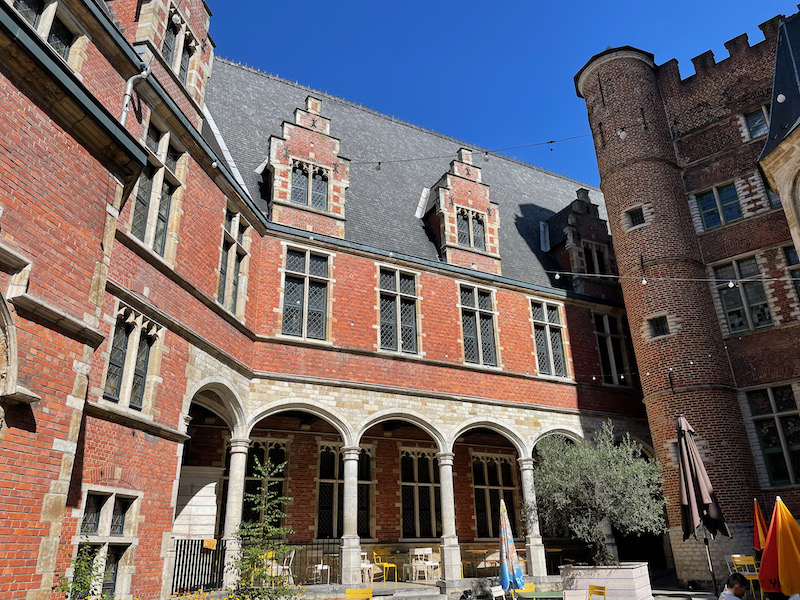
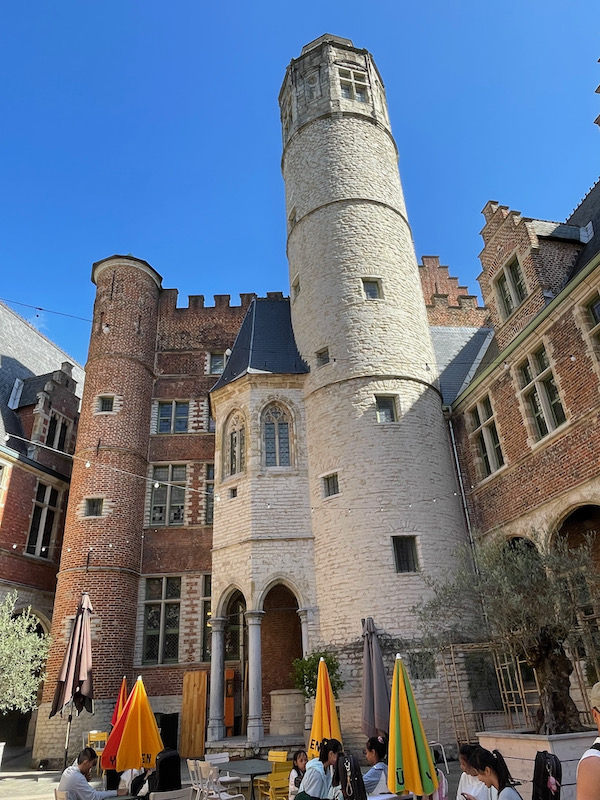
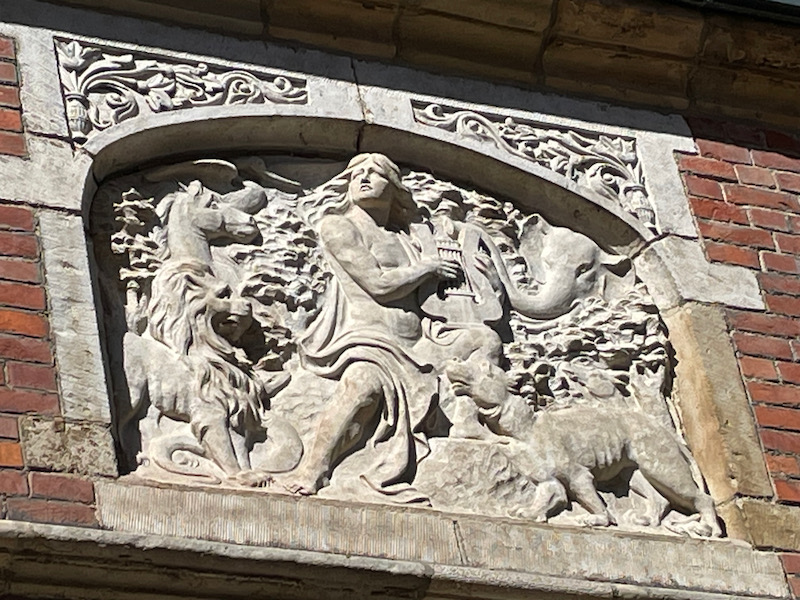
The Royal Dutch Theater was built at the end of 19th century. On the façade, above the entrance, you could see Apollo, the god of art and music, along with 12 muses.
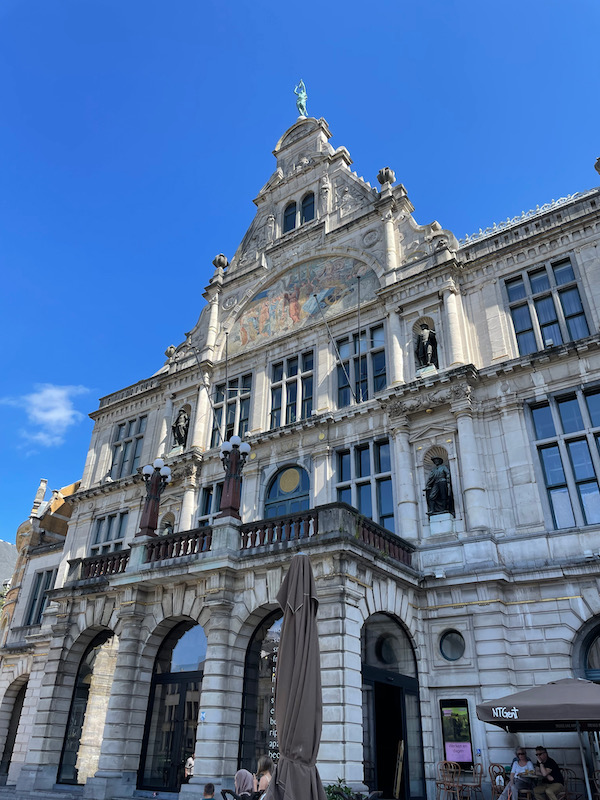
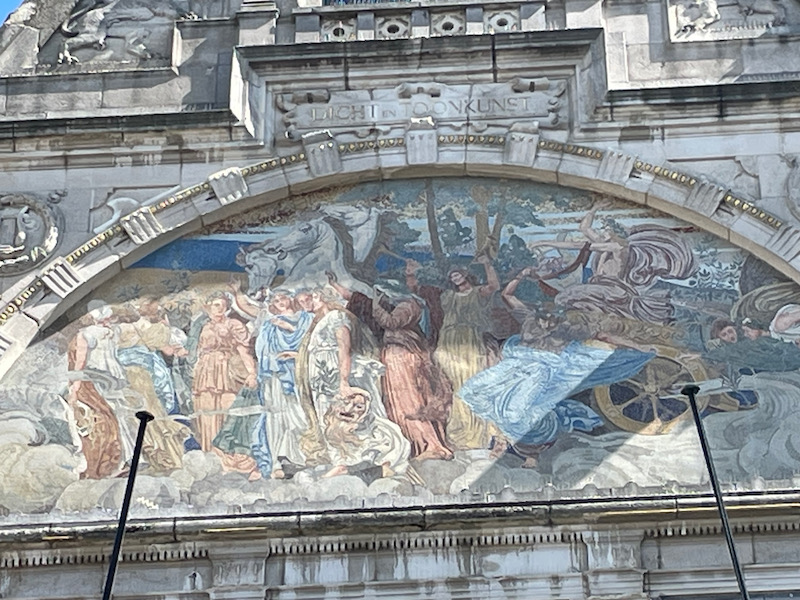
The Stadshal or City Pavilion is a recent edition to the old town, built in 2012. The citizens of Ghent have mockingly named this contemporary pavilion "the sheepfold" due to the shape. I can see where locals criticized it ... it looks very much out-of-place next to the historic buildings in the background.
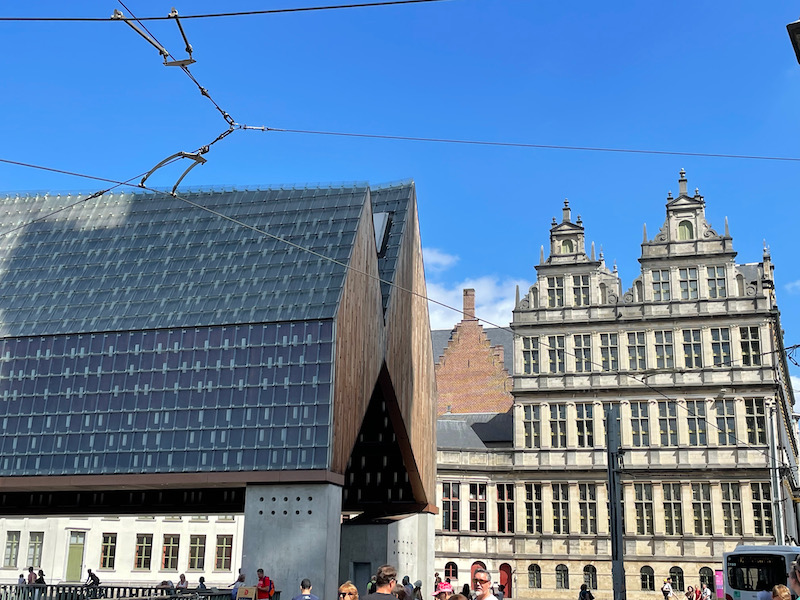
The Belfry is 1 of 3 medieval towers in the old city center (other 2 are at the Bavo Cathedral and St. Nicholas Church). At 299 feet, it is the tallest belfry in Belgium. Construction began in 1313 and finished 1380. The gilded dragon at the top was brought from Bruges and is the symbol of the city. The rectangular hall adjoining the belfry was built to headquarter the affairs of the cloth trade that made the city rich during the Middle Ages.
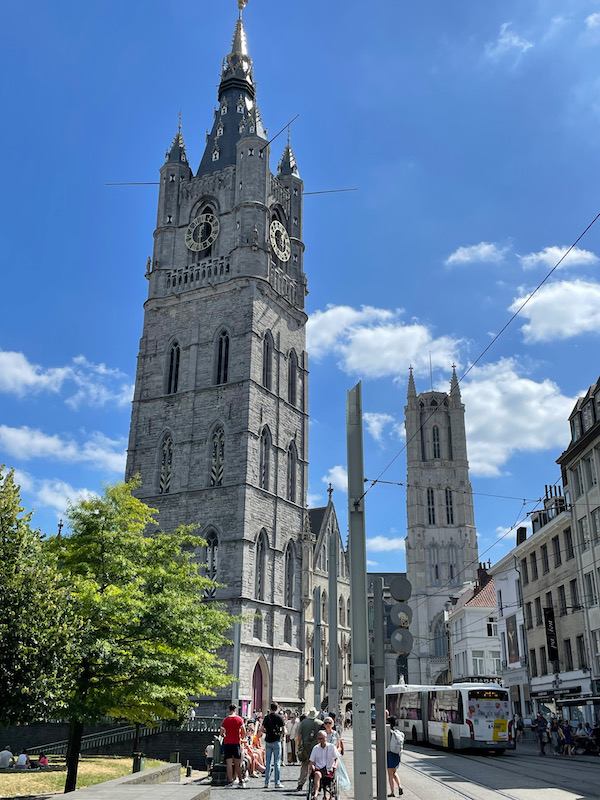
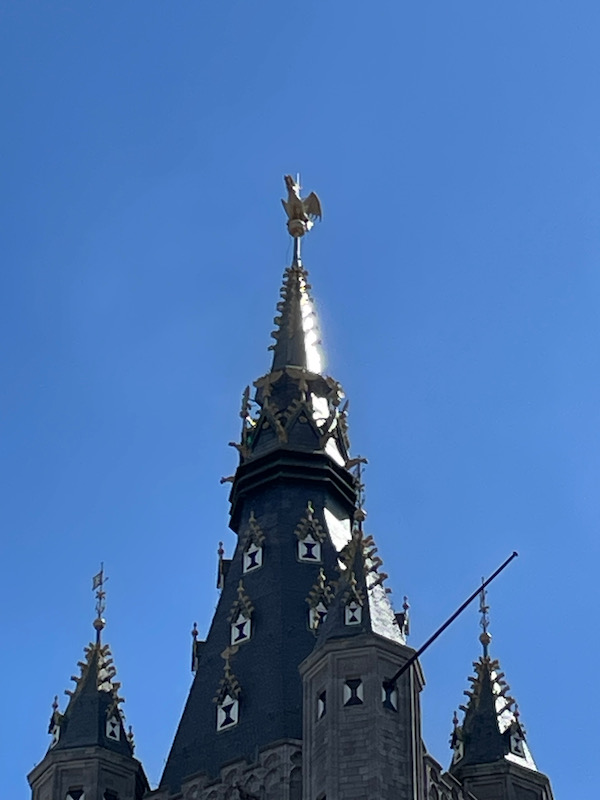
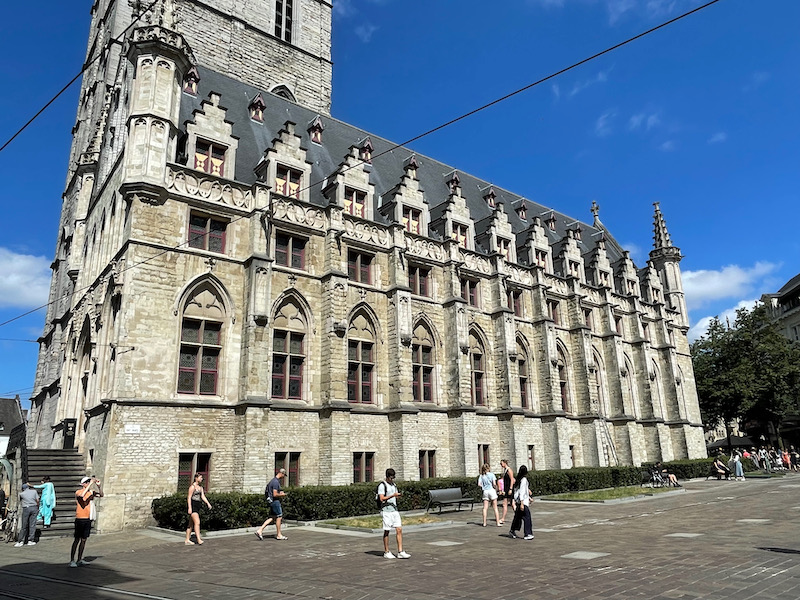
The Masons Guild Hall has an interesting story. It is the "original" 16th-century Masons Guild Hall, with 6 dancers that rotate with the wind on each step of the façade's gable. The city had thought that the façade had been lost during 19th century reconstructions. But in 1975, the original façade was found behind a bunch of masonry. There is also a copy of this building on Graslei quay, which was constructed for the World Exhibition in 1913 using the original plans when people had thought this building had been demolished.
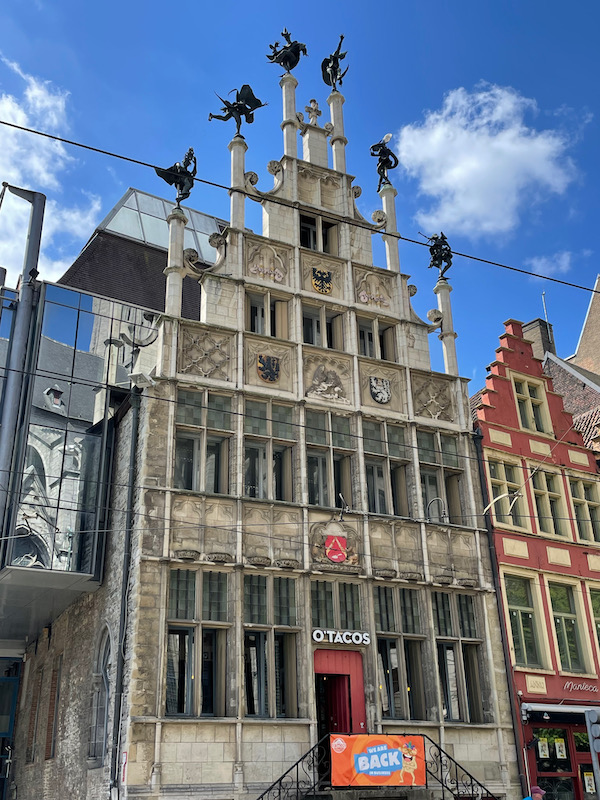

Thank goodness I don't need to try to pronounce our next stop, which was the Vrijdagmarkt (meaning Friday Market). It is one of the oldest squares in Ghent and at 100x100 meters, it is also one of the largest. Every Friday morning, the square is filled with market stalls; a tradition dating back to 1199. The centerpiece of the plaza is the statue of Jacob van Artevelde, a a Flemish statesman and political leader who sided with England during the Hundred Years' War and was murdered on the site in 1345. Around the base of the statue are various coats-of-arms
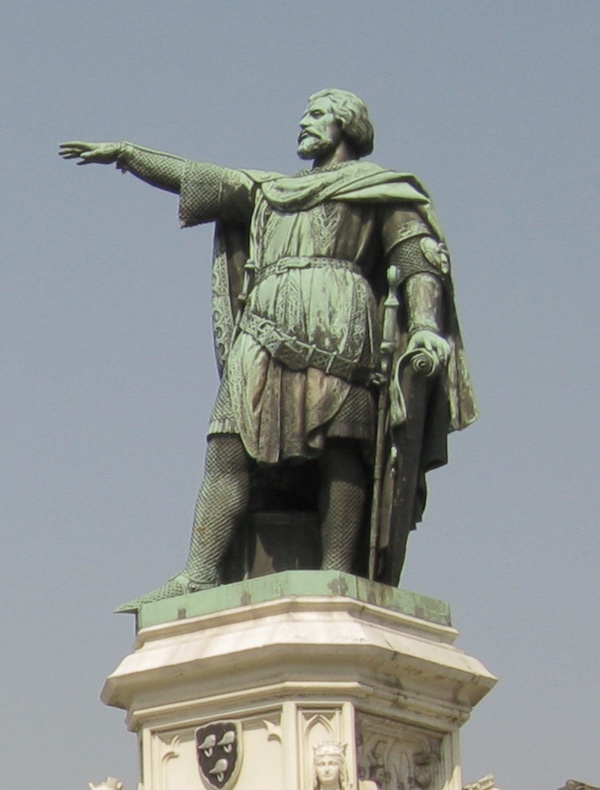
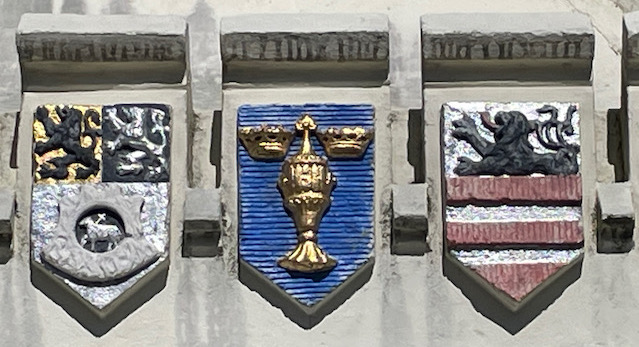
Across from the belfry is St Bavo’s Cathedral, a 13th-century church that has housed the famous Ghent Altarpiece for 6 centuries. It stands on the site of wooden chapel from 942, and construction of this Gothic church started in 1274.
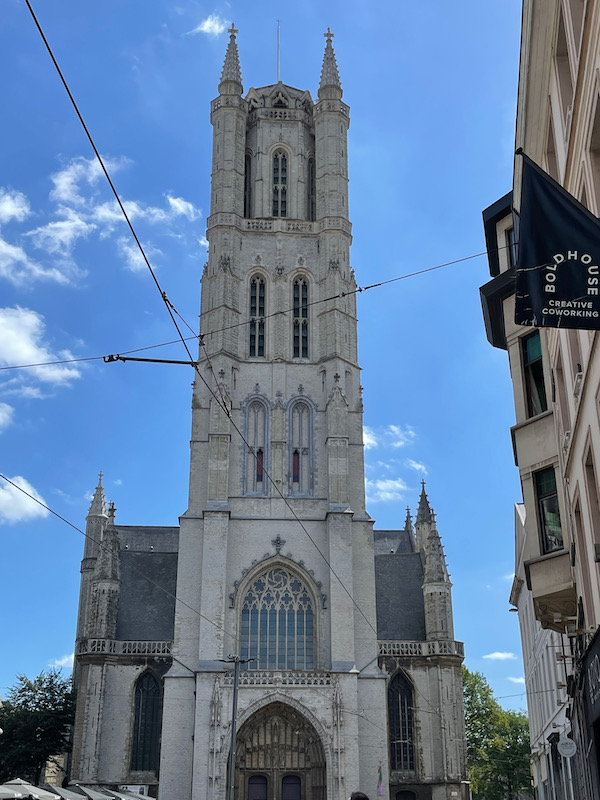
The interior is similar to quite a number of cathedrals, with high Gothic arches down the nave and a vaulted ceiling.
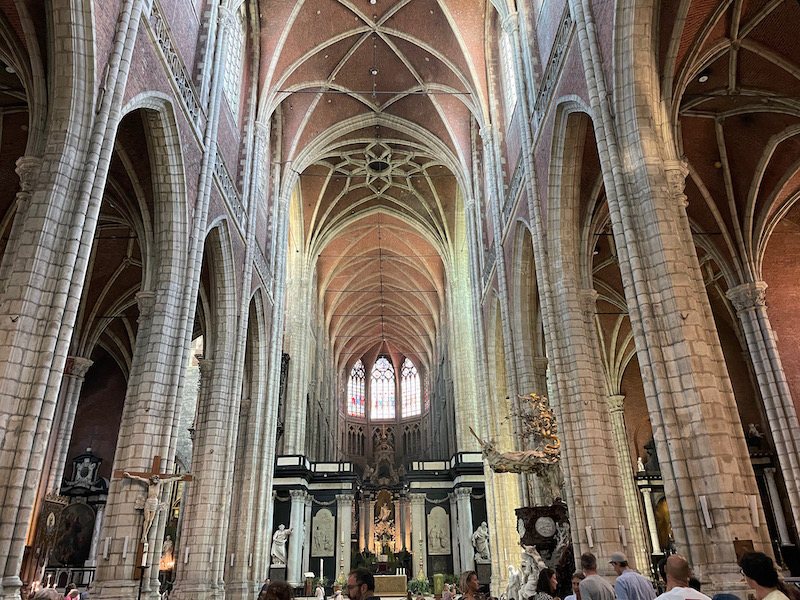
There are several different styles of stained-glass windows in the church. The last picture shows a new ‘Franciscan style’ stained-glass window called "Laudato si", which was created in 2018 by a Belgian artist. How he was able to do this was interesting ... he was giving a lecture in 2017 and when asked if he had something to wish for, he jokingly says: “A Mercedes or a stained-glass window for the St. Bavo Cathedral in Ghent.” His friends got together and made a donation that enabled him to design a stained-glass window for St. Bavo Cathedral!
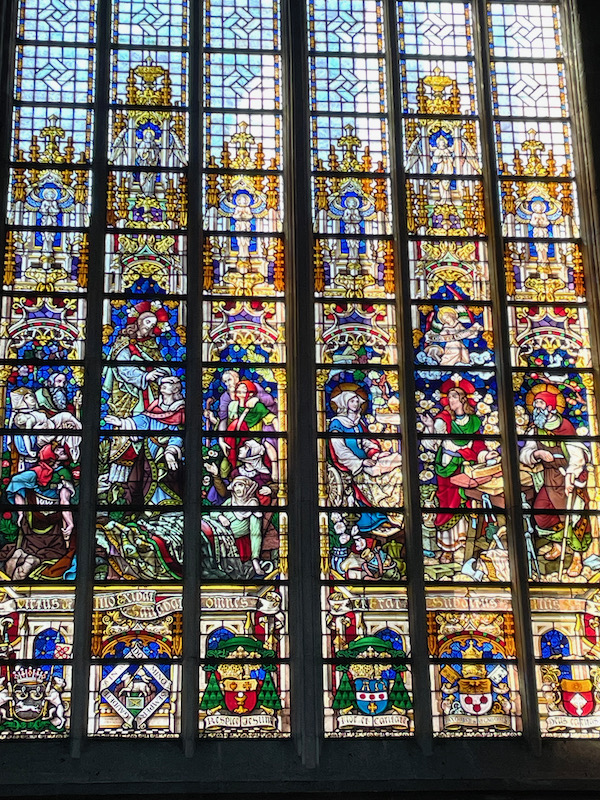
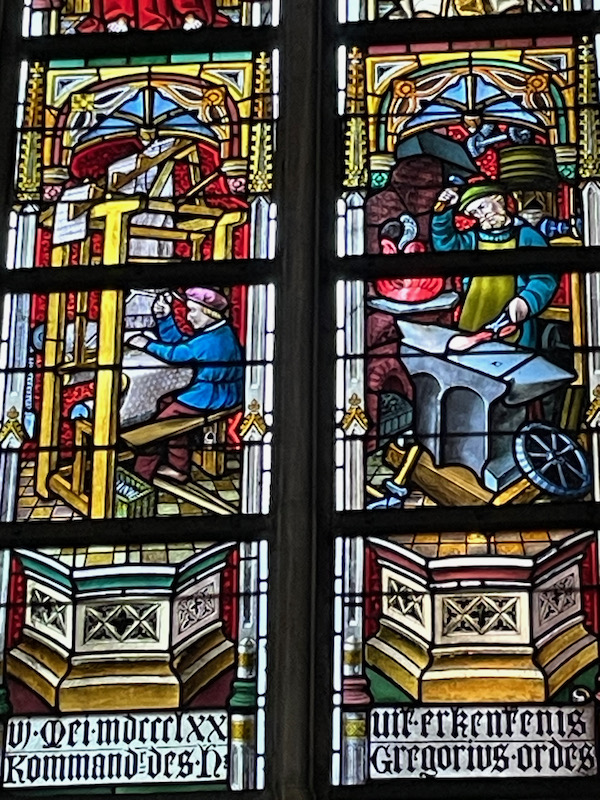
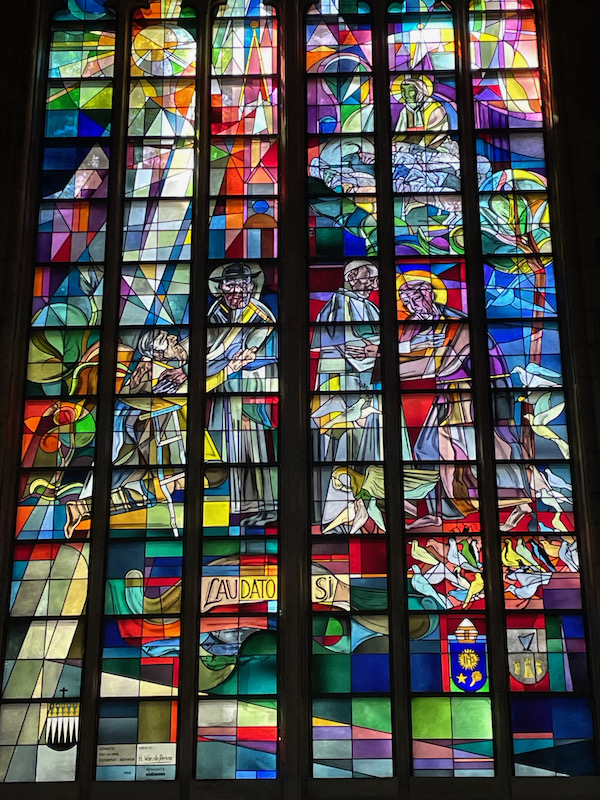
The impressive rococo pulpit, made of oak, gilded wood, and both white and black marble, was created by Laurent Delvaux between 1741 and 1745.
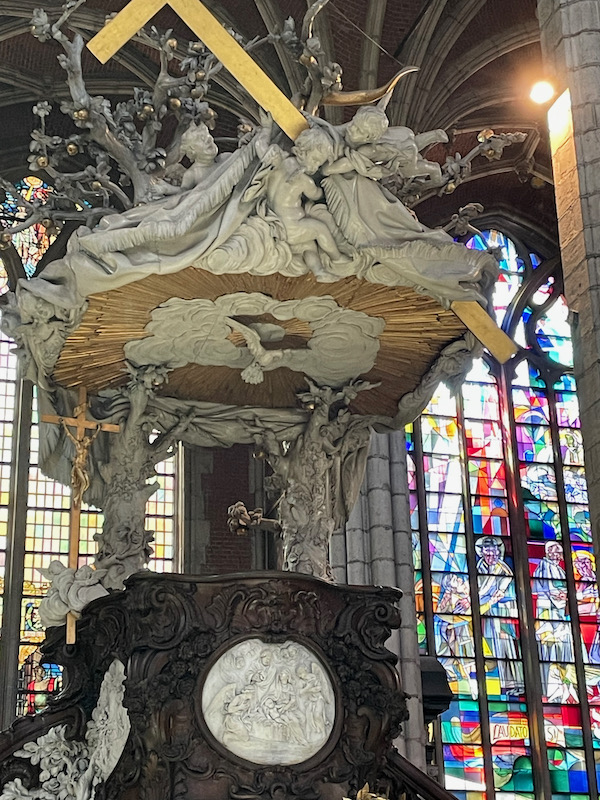
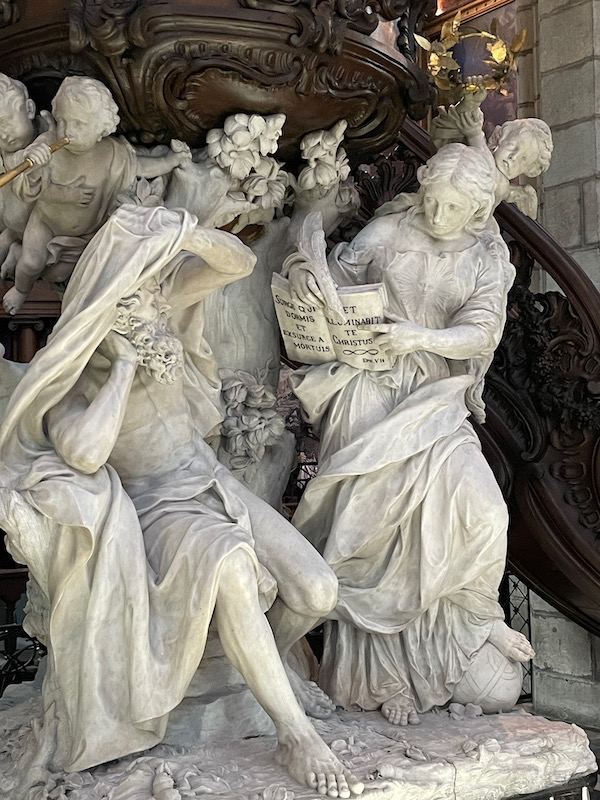
You'll notice that I mentioned that it was the home of the famous Ghent Altarpiece, but I didn't show any pictures of it. Well, that is because we didn't have a bunch of time and you have to buy a ticket for it with a specific time slot. Perhaps the next time we happen to pass through Ghent.
St Nicholas’ Church is one of the oldest and most prominent landmarks, begun in the 13th century in a style called Scheldt Gothic. The style uses blue-grey stone, a single tower above the crossing, and turrets on the corners of the building.
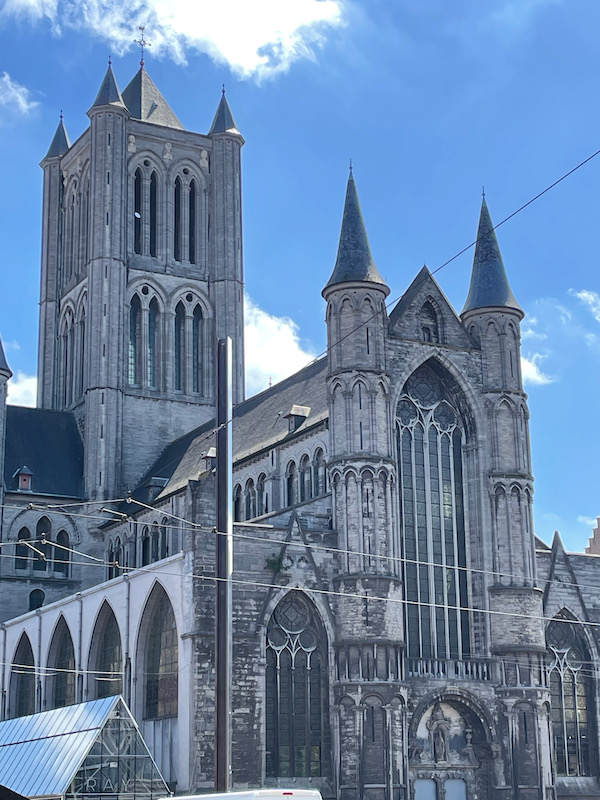
Inside, it is quite bright thanks to the large windows and high vaulted ceiling. The Baroque main altar features a work by a 17th-century painter. The other altarpieces are also Baroque in design.
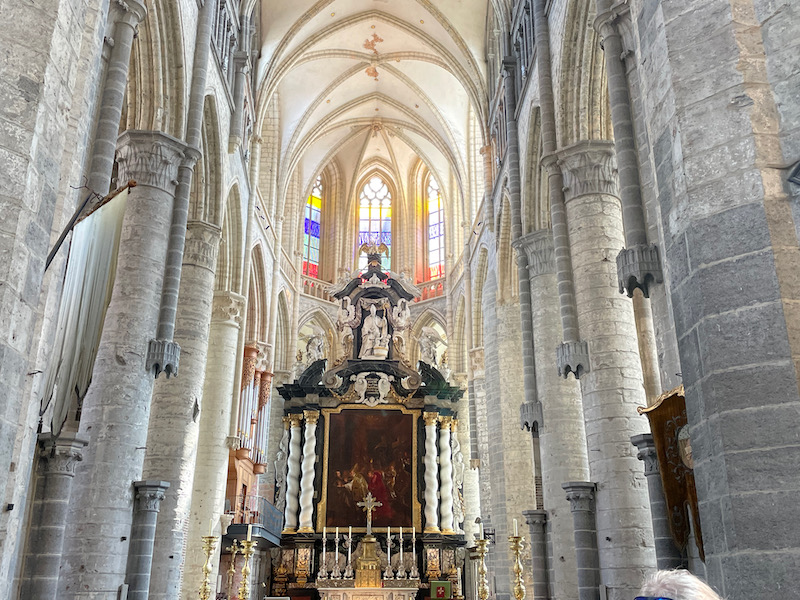
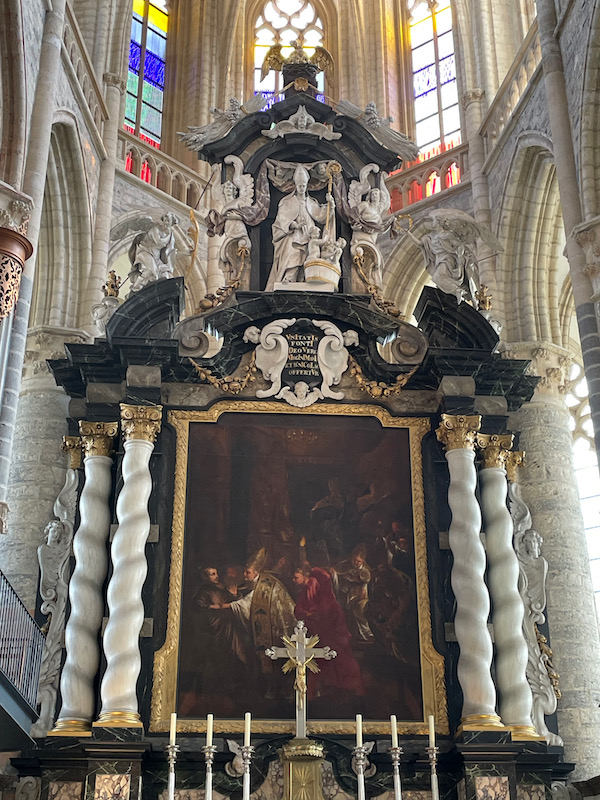
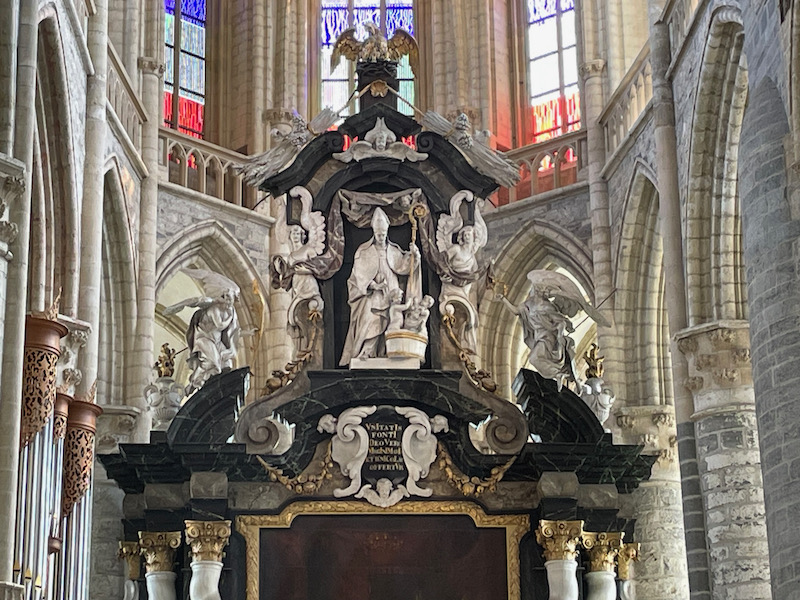
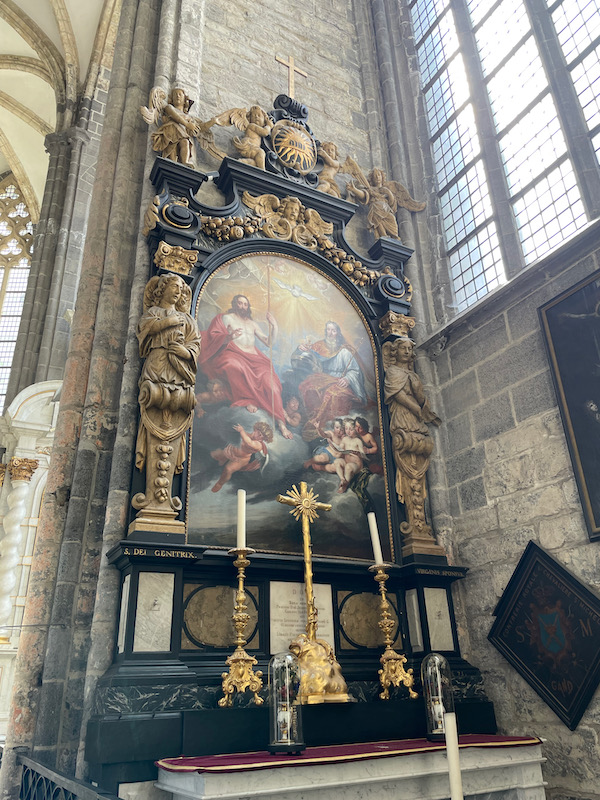
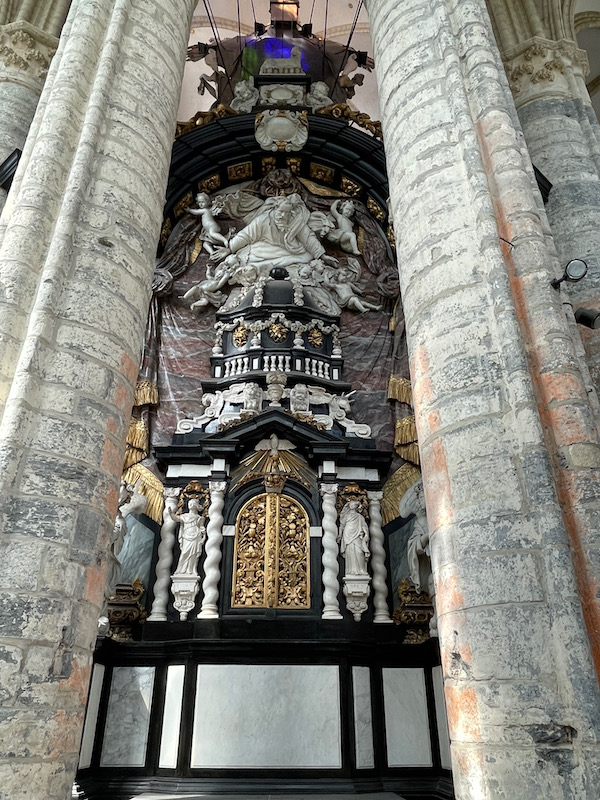
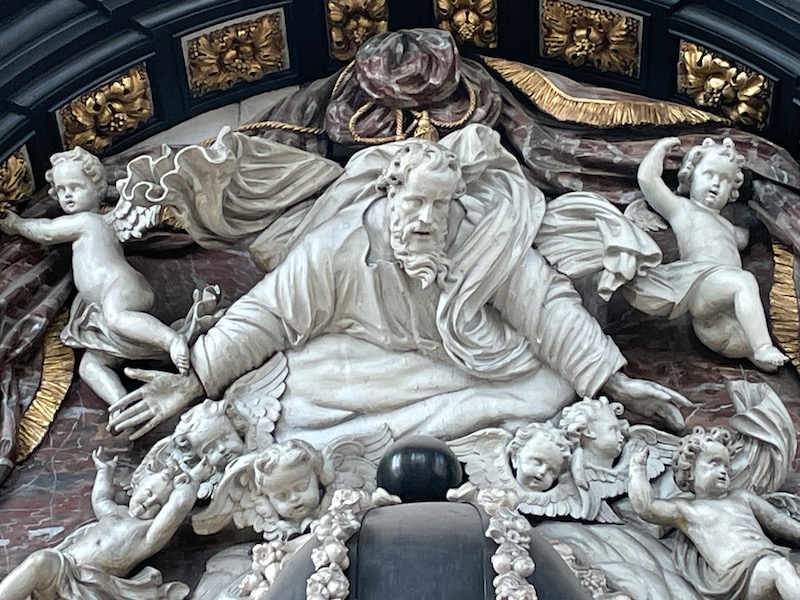
This is the former post office building, dating back to 1909 that was built during the run-up to the World Exhibitionof 1913 in Ghent. It is a richly decorated building, mixing Gothic and Renaissance elements together.
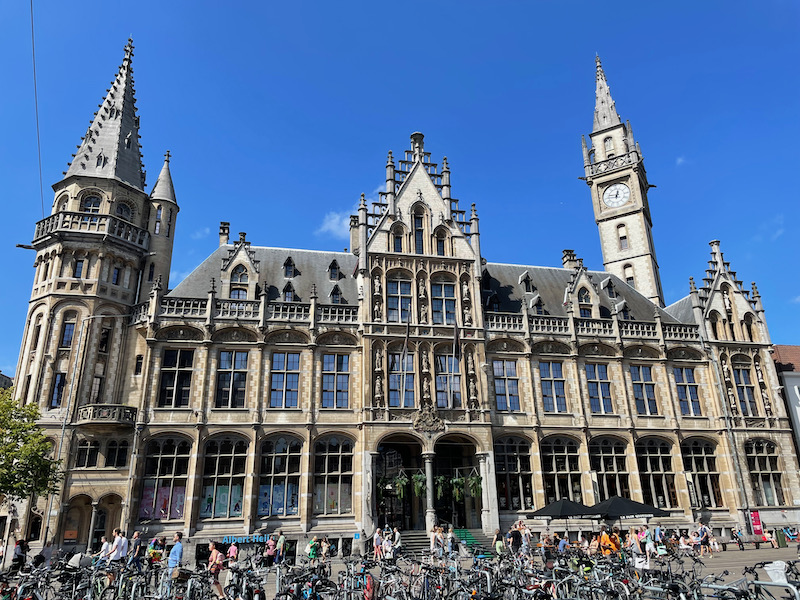
St Michael’s Bridge is a stone arch bridge, built 1905-1909. Behind it you can see the first church that we walked by (unfortunately, it was still closed).
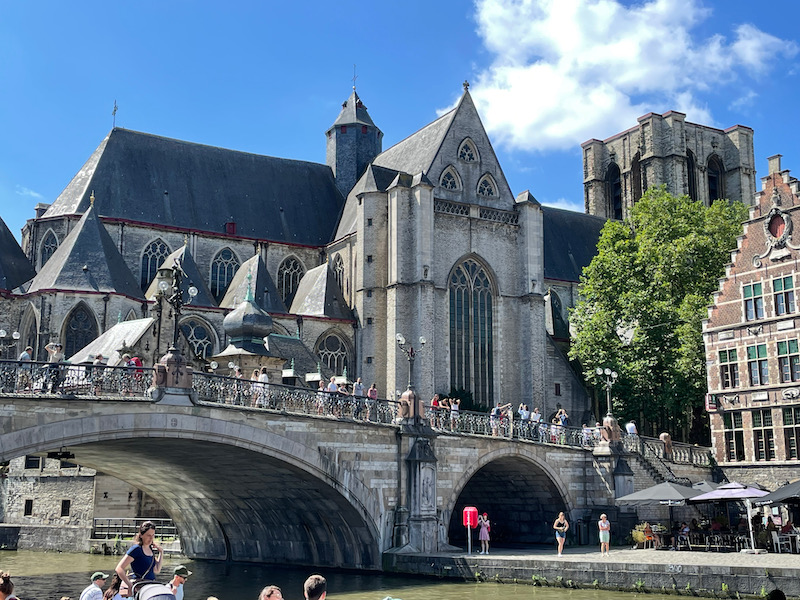
A good view back to town, with the various historical buildings along the quays and the top of the Gravensteen Castle, with the flags.
